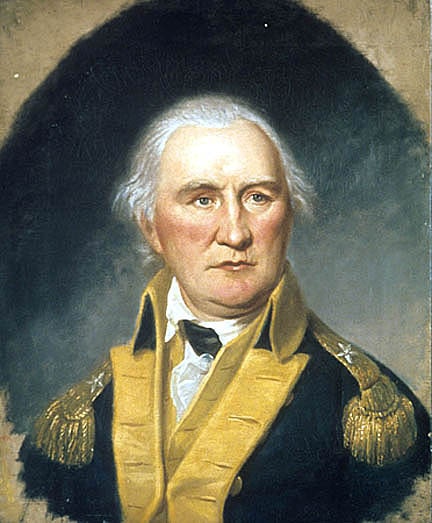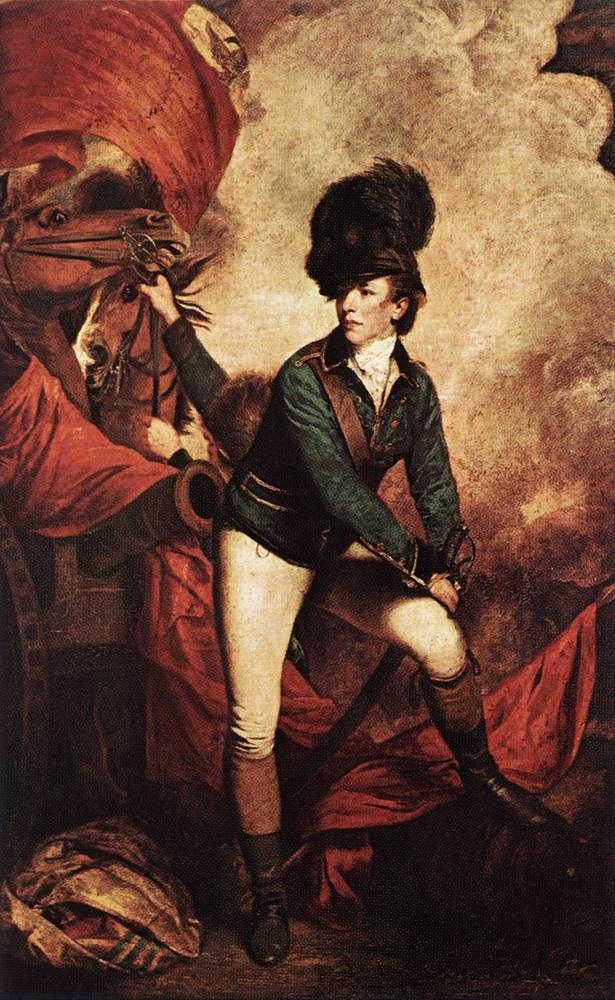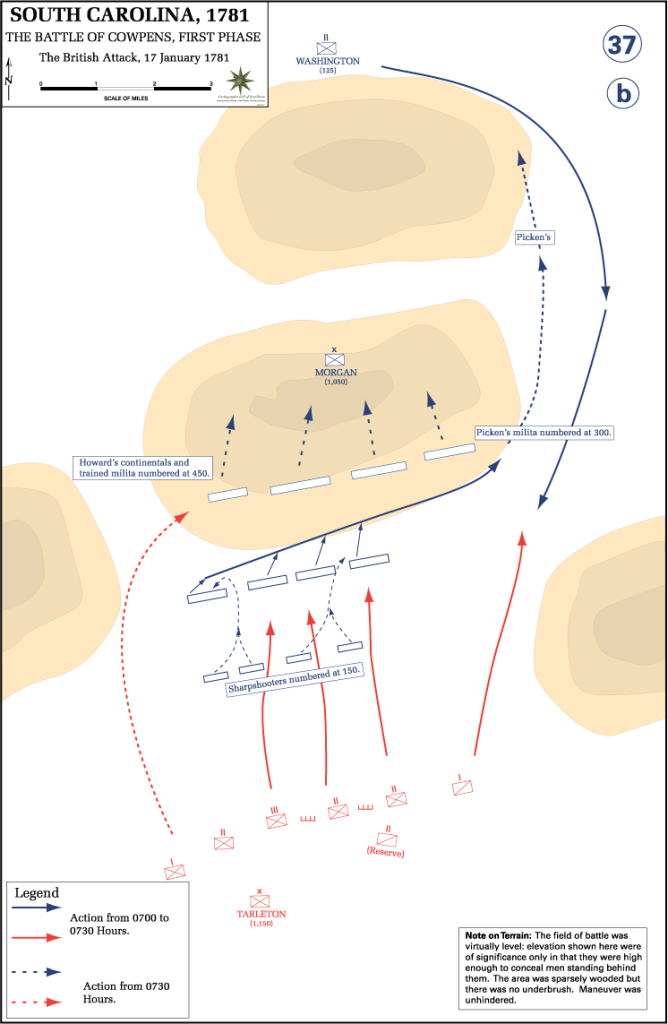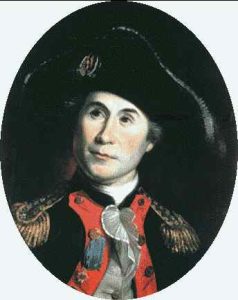Contents
Contents
The Battle of Cowpens was fought between Patriot and British forces near Chesnee, South Carolina, on January 17, 1781.
The battle resulted in an important victory for the Continental Army, with the British suffering significant losses.
Summary
Leadup
During the second half of the Revolutionary War, British military strategy placed significant focus on the southern colonies, under what became known as the Southern Strategy.
The British believed that they had stronger support in the south, and that when they engaged colonial forces in these regions, the local population would rise up against the Patriot militias.
The southern colonies were also a key source of profitable exports such as tobacco and rice, which the British wanted full control over.
In 1778, with France entering the war on the American side, the British implemented the Southern Strategy:
- On December 29, 1778, they captured the city of Savannah, Georgia from Patriot forces.
- In May 1780, they captured the city of Charleston, South Carolina, in what became known as the Siege of Charleston.
- The British offered freedom to any slaves who escaped their American captors and made it to British lines, in order to disrupt the Patriot labor force and military supply lines.
After the Siege of Charleston, the British had the upper hand in the South. However, they overestimated local Loyalist support, and faced regular guerrilla attacks from Patriot militias.
In October 1780, General Nathanael Greene was placed in command of Continental Army forces in the south. He joined forces with Daniel Morgan, in charge of the famous sharpshooters known as Morgan’s Riflemen, in Charlotte, North Carolina.

Greene ordered Morgan’s division to move southwest of Charlotte to attack British supply lines.
To combat this, General Charles Cornwallis, in charge of the British Army in the Southern Theatre, ordered Lieutenant Colonel Banastre Tarleton to cut off Morgan’s men.

Soon, Tarleton and his 1,150 troops began chasing Morgan through South Carolina. It is unknown exactly how many men Morgan had, with most estimates putting his militia’s strength at either 1,000 or just under 2,000 men.
Morgan eventually found himself in a good location to begin fighting, and set up his men on a hill overlooking plains known as “Hannah’s Cowpens”, southeast of Chesnee, SC, protected on each flank by a ravine and a river.
Battle
Early in the morning of January 17, 1781, Tarleton’s men emerged from the woods, and spotted Morgan’s frontline.
They attacked, and Morgan feigned a retreat. Tarleton fell for the trap, ordering his men to move forward without taking the time to survey the battlefield.
Morgan ordered his less experienced men to fire two volleys, targeting British officers in order to leave their soldiers leaderless in the field. Then, they were instructed to fall back behind his more experienced Continental Army soldiers.
The plan worked – the British lost many of their officers, but believing the Americans were retreating, continued to push forward and eventually broke formation.

Morgan ordered a counter-attack, and the results were devastating. His cavalry ran through the British, and after just an hour of fighting, the Americans had won the battle.
The Americans took 712 British prisoners, including some of their army’s best troops at the time.
229 British were wounded, and 110 were killed in action. By comparison, just 25 Americans died at Cowpens, with 124 wounded.
Significance
Victory at the Battle of Cowpens was a significant psychological boost for the Patriots.
This was especially true in the South, where the Battle of Cowpens reinvigorated support for the Continental cause.
After Cowpens, British focus shifted away from conquering South Carolina. Instead, Cornwallis pursued the Americans into North Carolina, eventually meeting them at the Battle of Guilford Courthouse in March 1781.
Though the British won this battle, they faced heavy losses. And with Tarleton’s men defeated, the British took the time to regroup in the summer of 1781.
This allowed George Washington to prepare to take on Cornwallis at Yorktown – eventually leading to American victory in the Revolutionary War.
Facts
- Morgan was initially under orders from Greene to continue moving, and avoid conflict with Tarleton. However, after finding a good spot to fight from, he decided to ignore this order, to avoid the risk of his men being caught off guard by a surprise attack.
- By the time they reached Morgan, the British were exhausted, and by some accounts, severely malnourished. Tarleton, known for his aggressive tactics, had pushed his men extremely hard to catch up to Morgan’s militia, marching through difficult terrain for days with little chance to eat or rest.
- Leading the American cavalry during the counterattack was William Washington, second cousin to George Washington. He is said to have personally pursued Tarleton in the field, shouting insults at him as he went. Tarleton was eventually able to escape Washington and leave the battlefield.
- Immediately after the battle, the Americans evacuated north. With his relatively low number of troops, Morgan desperately wanted to avoid an encounter with Lord Cornwallis’s army, which was nearby.
- Morgan’s decision to fake a retreat to entice the British head-on into his best men is widely considered the smartest military tactical decision of the Revolutionary War.
- The Cowpens Flag – one of the first American flags to feature the stars and stripes – is thought to have flown at the Battle of Cowpens.


